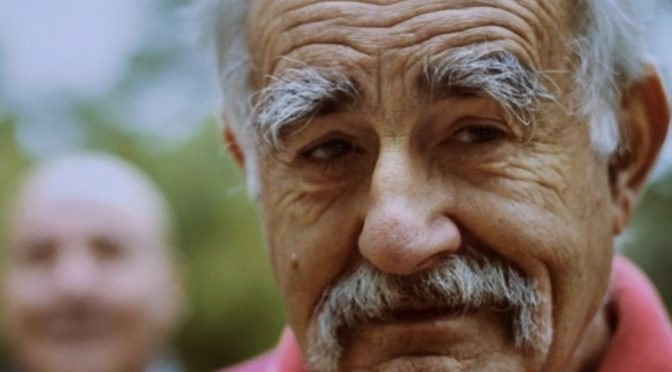 THE SPY WITHIN (MUDAR LA PIEL) is the creation of Ana Schulz and Cristóbal Fernández and was only released last year, making it one of the most recent films to be featured in Cinemaattic’s Basque Spring Film Festival. It is showing at the Glasgow Film Theatre on Thursday 2nd May and will be followed by a Q&A with co-director Ana Schulz.
THE SPY WITHIN (MUDAR LA PIEL) is the creation of Ana Schulz and Cristóbal Fernández and was only released last year, making it one of the most recent films to be featured in Cinemaattic’s Basque Spring Film Festival. It is showing at the Glasgow Film Theatre on Thursday 2nd May and will be followed by a Q&A with co-director Ana Schulz.
THE SPY WITHIN tells the story of Schulz’s father, Juan Gutiérrez, who was a mediator between the Basque separatist group ETA and the Spanish government during the long and bloody Basque conflict. ETA only disbanded on 2nd May 2018, exactly one year before the GFT’s screening of THE SPY WITHIN, which is perhaps no coincidence. The film, which begins in media res in the 1980s, provides little background information on the conflict, the origins of which date back to 1959. As a result, it could prove initially confusing for viewers less familiar with this period of history. Really, though, it doesn’t matter how much you know or don’t know about ETA, because the Basque conflict serves only as the backdrop to a more personal story centred on Schulz’s father.
Juan, who in 1987 founded the Gernika Gogoratuz Peace Research Centre, sought a resolution to the conflict through discussions with both sides, stating pragmatically that “reconciliation between the good guys leads to nothing”; you have to also negotiate with the bad guys, a lesson also learned in the Northern Irish peace process. Unfortunately, despite his good intentions, Juan proved vulnerable when the charming Roberto Diez entered his life. Juan and Roberto soon became close friends, and Juan’s German wife Frauke recalls how Roberto would always be round at the house. What they didn’t discover until years later, a decade after Roberto’s mysterious disappearance, was that Roberto was a spy.
Remarkably, Juan forgave his ‘friend’; in fact, Juan felt that there was nothing to forgive him for. When Roberto was sentenced to twelve years in jail, Juan visited him forty times, although they rarely discussed the fact that Roberto was a spy. Ana Schulz asks how this friendship can be possible, and the audience is likely to be asking the same question. This is what Schulz sets out to explore in her film: Not only the story of how Roberto was able to infiltrate into her father’s life so effectively, but also the afterstory of how their friendship could continue after Roberto’s terrible betrayal of trust.
The film contains many of the typical features of a documentary, such as interviews with Schulz’s parents and even with the man himself, Roberto. Except, Roberto had second thoughts halfway through the production and refused permission for footage of him to be used. Schulz and Fernández were frustrated by his uncooperativeness, until they came up with a solution: Using the footage they already had, they would employ an actor, Mingo Ràfols, to play Roberto. This documentary feels in part, therefore, like a spy drama, with sinister music and atmospheric cinematography emphasising Roberto’s untrustworthiness. Although stylish in a TINKER TAILOR SOLDIER SPY way, these dramatic moments jar with the more down-to-earth scenes with Schulz’s parents, resulting in an uneven film.
Schulz and Fernández seem torn as to whether THE SPY WITHIN is the spy thriller suggested by its title or the personal story of a very unusual friendship. If it’s both, these two elements don’t quite gel. This unevenness is perhaps down to the difficulties that arose in the film’s production, as the directors were forced to change their approach after Roberto pulled out. As a result, we never get to see Juan and Roberto interact on screen, which is a shame as it would have made for a fascinating watch. Nevertheless, THE SPY WITHIN is an interesting film with many resonances in today’s turbulent times.
You can but tickets for the Basque Spring Film Festival screening here.


One thought on “The Spy Within”
Comments are closed.